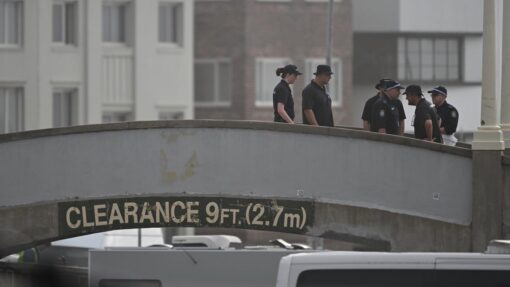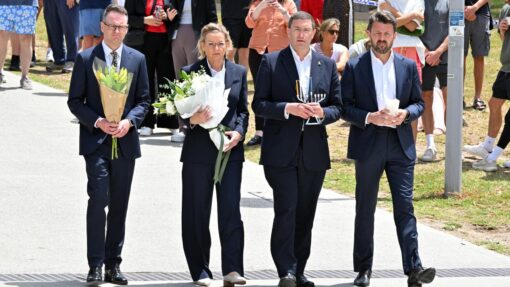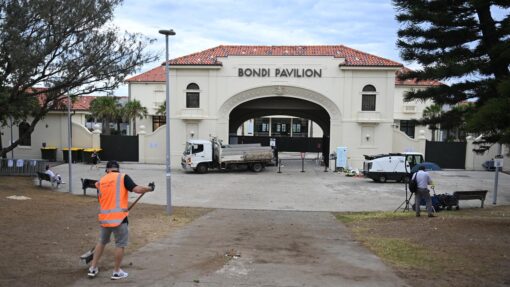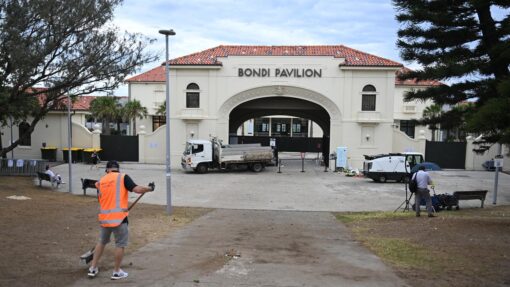Symbolic handback of Uluru celebrated 40 years on
Lloyd Jones |
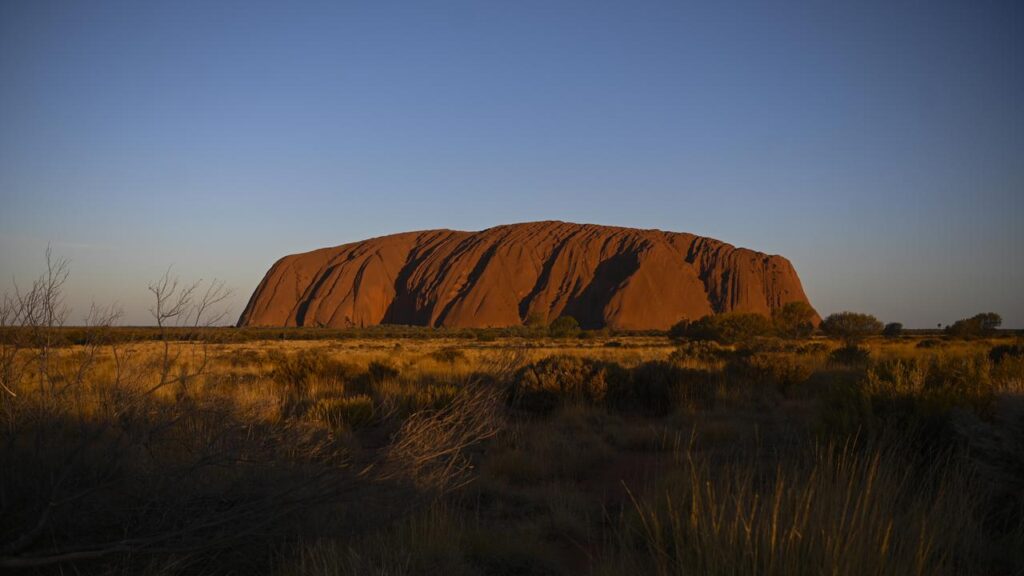
Celebrations are under way in the Red Centre with traditional song, dance and arts on display to mark 40 years since the giant rock known as Uluru was handed back to the Anangu people.
The return of ownership of Uluru and nearby Kata Tjuta, also known as Ayers Rock and The Olgas, on October 26, 1985, was a symbolic high point for Aboriginal land rights.
Then governor-general Ninian Stephen handed over the title deeds for the rock to the Anangu Traditional Owners.
Prime Minister Anthony Albanese and Governor-General Sam Mostyn are attending the weekend celebrations.

Thunderstorms played out for hours at Uluru early on Saturday, with heavy rain soaking the rock and creating waterfalls down its sides before the sky cleared during the morning.
At Uluru-Kata Tjuta National Park, Mr Albanese told reporters it was a great honour to be the first prime minister to attend a celebration of the handback of a symbol that signified Australia around the world.
It was an “extraordinary place of beauty and spiritual significance for the Anangu people” but anyone who visited felt the significance of a very sacred place, he said.
The Anangu people had been generous, the prime minister said, in welcoming visitors from around Australia and the world.
Mr Albanese paid tribute to the courage of the Bob Hawke government in handing back Uluru despite controversy at the time.
He said banning climbing the rock was also controversial but had been the right thing to do.

Asked about the failure of the referendum on a Voice to parliament, Mr Albanese said “change is hard, but progress occurs”.
“It doesn’t occur in a straight line. It’s not easy. Hard things are worth doing,” he said.
He said his government would work on other ways to achieve reconciliation and advance the interests of First Nations people, including Closing the Gap.
At the 1985 handback ceremony, the Anangu signed a joint management agreement, leasing the land back to the Australian Parks and Wildlife Service (now the Director of National Parks) for 99 years.
The handback followed decades of lobbying by Traditional Owners to have their rights recognised and set the scene for other land handbacks across Australia.
In a speech at Saturday’s event, Mr Albanese declared the 1985 handback “a milestone in Aboriginal land rights and a powerful moment in the story of our continent”.
“On behalf of Australia, I say to the Anangu, ‘we thank you for your patience, we thank you for your grace’.”

Anangu woman Alison Milyika Carroll remembers attending the event with her father in her 20s and seeing the title deeds handed over to male and female elders.
“This rock belongs to Anangu and is for everybody,” she told AAP at Uluru.
“We love people coming here from all over to walk around and see it.
“They enjoy it – to see this amazing rock.”
Shaeleigh Swan, the first Indigenous manager of the national park, called the weekend’s handback ceremonies an opportunity to acknowledge the Anangu elders and what they fought for.

“They really wanted to make change for the land rights for all the grandchildren and the future generations,” she told AAP.
Joint management of the park had been a great partnership for Anangu and the Commonwealth to look after Country in a very productive way, Ms Swan said.
Park board member Craig Woods said tourism at the rock provided many opportunities for the Anangu to create businesses, including art and artefacts such as traditional tools to sell as souvenirs.
Uluru is included in the UNESCO World Heritage List and is one of the most recognisable natural sites in the world.
Governor-General Mostyn will unveil a plaque commemorating the 40th anniversary of the handback on Sunday.
AAP